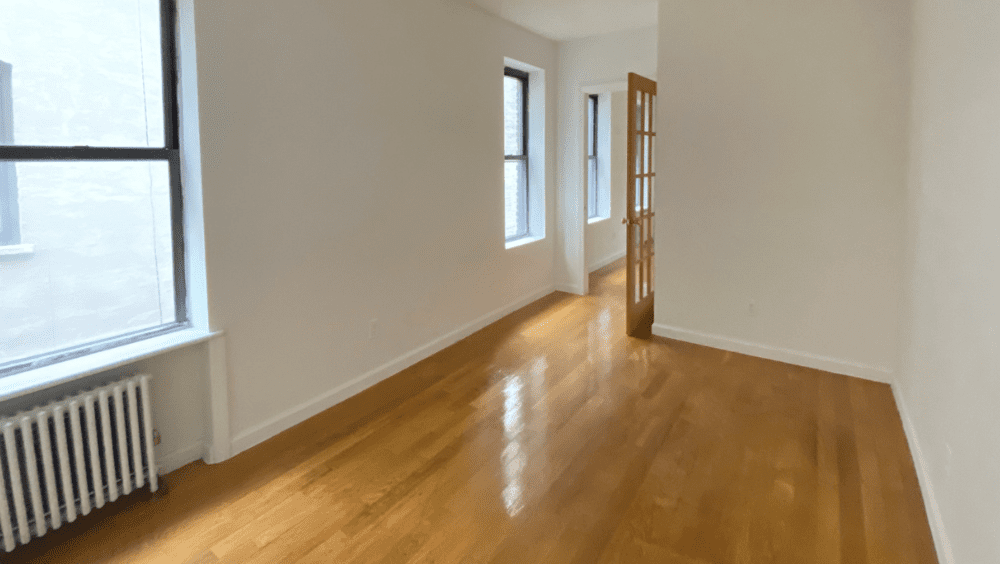
Most buyers aren’t visionaries, which makes selling a vacant home harder: “I know some clients who love the empty space because they can envision what they’ll do with it. But other people just simply can’t, and that’s a tougher deal,” says Sam Flamont, a top Traverse City, Michigan real estate agent. A study suggests that a vacant home will sell for over $11,000 less and sit on the market for six more days than the average sale. However, some sellers can’t stay in their properties while they market it — a job relocation or new home purchase draws them away, or they inherit a home from out of state. That’s where the advice of a professional stager and seasoned real estate agent comes in handy. With their expert advice and additional research on vacant home sales, we’ve compiled 12 tips to make selling your vacant home easier. With an empty or unstaged home, the first impression of curb appeal matters even more than usual. In HomeLight’s latest Top Agent Insights Report, over 48% of agents surveyed agreed that improved curb appeal has become the strongest selling point in today’s market. Here’s how to maintain curb appeal, even if you’re not onsite every day: A great real estate agent can be a godsend when you’re selling a house from a distance. When interviewing agents, ask about their experience selling vacant homes or if they offer staging or house cleaning services with their listings. “My garage right now actually has four couches, a coffee table, some chairs, and end tables, just in case I need to stage a home,” says Flamont. When Flamont ran into an issue selling a client’s flipped and vacant property, he went out, purchased furniture on his own dime, and staged the property himself. “After we furnished the unit, the sales picked up rather quickly. I actually ended up selling the furniture with the home, too,” he says. Talk about service! If you need an agent like Flamont, we’re here to connect you with someone of equal caliber in your market. Start your agent search with HomeLight now — we’ll help you find a pro who can sell your vacant home in no time. Almost 40% of the respondents in HomeLight’s Top Agent Insights Survey said staging can help sellers sell their home in the current market. “While we always recommend staging the entire home, if this is not a possibility, start with staging the public rooms completely,” recommends Justin Riordan, interior designer, architect, and founder of the Portland and Seattle home staging company Spade and Archer Design Agency. That includes the living room, dining room, and kitchen. Beyond the public rooms, Riordan advises sellers to prioritize spaces as follows: Not all buyers have the ability to envision items in a vacant space. “When someone walks into a home, they don’t know if their couch is going to fit or if their beds are going to fit. That’s the hardest part,” Flamont says. Make the bed a focal point: Keeping a bed in the primary bedroom will help convince buyers that, yes, their king or queen mattress will fit in the room, with space to spare. An affordable $30 crisp white duvet and pillowcase set from IKEA will make the room feel spa-like. If the bedroom is on the smaller side, go for a double or full bed — or even a twin if the bedroom is suitable for a child. An oversized mattress in a small room can make it look even tinier. Space the couch to make the living room look bigger: Make sure you leave enough space between furniture in the living room to avoid it appearing cramped. If you’re staging more than one piece of furniture, make sure each piece has at least 30 inches of space between them, advises . Leave 14 to 18 inches between the couch and coffee table so that visitors can pass through with ease. Leaving small items behind, like an errant lamp or single frame on the wall, can make the space look haphazard as if the sellers fled in the middle of the night. “Full staging is the best, completely vacant is second best, and halfway done is the worst,” Riordan explains. “The few random items left behind can feel like afterthoughts at best, and laziness at worst.” If you choose not to stage the home, make sure everything is removed before listing it. When selling a vacant home, your biggest enemy will be dust and grime. If the house is dirty, buyers will just get a bad feeling touring the property. On top of an exhaustive deep cleaning before listing, you should set up regular cleanings every three weeks. “You should definitely have somebody go through and spruce it up, just get rid of the cobwebs and the dust,” advises Flamont. Expect to pay $209 on average per deep cleaning. See if your agent has any referrals for cleaning services that you can trust since you aren’t in the area. In an especially competitive seller’s market where homes fly off the shelf in a matter of days (or even hours), motivated buyers don’t have the luxury to pass up an opportunity whether a house is vacant or occupied. That could mean that you don’t need a full staging — or any staging, for that matter! — to sell. Armed with a comparative market analysis to set an accurate price, work with your agent to determine how much work you need to put into your home’s presentation, given the state of the market. Put buyers at ease with the ideal home temperature. Keep the thermostat hovering between 76℉ in the winter and 68℉ in the summer. To save on heating and cooling costs, install a smart thermostat, like the Ecobee or Nest, to monitor the temperature from far away. Both smart thermostats can detect when someone enters the home, boosting the temperature to your pre-determined comfort level. According to the FBI, a home burglary in the U.S. occurs every 25.7 seconds. Vacant properties can also be a prime target for break-ins. The for-sale sign signals an opportunity for burglars, as strangers will be in and out of the property, and it can be an ideal time to steal appliances or other goods in the home. Here’s how you can prevent opportunistic crime, even when you’re not on the property: Buyers will feel turned off touring a dark, empty property after sunset. Make the space feel warm and welcoming before they even open the door with smart light bulbs and timers. Smartbulbs, like the $15 YeeLight, can be programmed from far away via Wi-Fi, and can be scheduled to turn on each night as the sun sets. Or spend less than $15 on an old-school mechanical timer that can turn on a lamp each evening. If your vacant property has been unoccupied for more than 60 days, you’ll need to change your insurance policy to ensure you have the right coverage. Properties that are unoccupied carry a higher risk, and your previous policy may be void. Vacant home policies tend to be more expensive, between 1.5 to three times more than an occupied policy. Reach out to your insurance provider to verify if your current policy extends to a vacant property. Otherwise, you may not be covered in the event of vandalism or damage to the property. Many of the stressors of selling a vacant home have to do with time. The longer the property is on the market, the more maintenance and security costs you’ll have to shell out. Even once the home is under contract, it’ll take 41 days on average to close, according to ICE Mortgage Technology. You can shrink that timeline dramatically by selling to a cash buyer who can close on a property in as little as 7-10 days. If you’re interested in selling off-market and skipping the listing process, you can request a cash offer through HomeLight’s Simple Sale platform, and we’ll introduce you to the highest bidder. We estimate a home’s Simple Sale price to be 90%-95% of the home’s market value. When you sell a vacant home, especially from a distance, you’ll need to get by with a little help from your friends. Those friends will most likely be an exceptional real estate agent with experience selling vacant homes; a dedicated lawn service and house cleaner; a talented home stager; and some neighbors who can help you keep tabs on anything that looks off. A vacant home can be harder to sell, but only if that vacancy translates as abandoned, cold, or oddly configured. Give buyers the nudge they need to see it clearly, and you’ll be well on your way to getting an offer.Tips for selling a vacant home
1. Give your curb appeal extra love
2. Work with a dedicated real estate agent
3. Stage your home, prioritizing key spaces
4. Pay close attention when staging the bed and couch
5. Remove stray items to avoid the ‘abandoned’ look
6. Schedule for regular cleanings through closing
7. Know your market
8. Manage the thermostat remotely
9. Set up security
10. Use lamps and lighting to warm up stark spaces
11. Make sure your homeowners insurance is still valid
12. Reduce closing time by selling to a cash buyer
So, is it easier to sell a vacant home?



